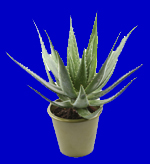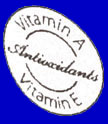What is in ubalm that makes it work so well?
The basic ingredents in ubalm have each been selected for a
specific reason. While this is not a comprehensive list, these
are the most important. These are basic general descriptions of
the properties of each ingredient. This will give you a little
insight into what makes this such a fantastic skin moisturizer!
- Tocopherol Acetate (Vitamin E - Super Antioxidant)
-
Is a lipid-soluble vitamin (it likes fat better than water) whic is known for being an excellent antioxidant when applied topically to skin. Some studies have indicated tocopherol acetate is also bioavailable and protective for skin. Pointing to the significance of vitamin E for skin the Journal of Molecular Medicine states “More than other tissues, the skin is exposed to numerous environmental chemical and physical agents such as ultraviolet light causing free-radical damage. In the skin this results in several adverse effects such as erythema [redness], edema [swelling], thickening, wrinkling, and an increased incidence of skin cancer.
Vitamin E is the major naturally occurring antioxidant protecting skin from the adverse effects of oxidative stress including sun damage. Many studies document that vitamin E occupies a central position as a highly efficient antioxidant, thereby providing possibilities to decrease the frequency and severity of pathological events in the skin.”
- Retinyl Palmitate (Vitamin A - Antioxidant)
- It is a combination of retinol (pure vitamin A) and palmitic acid. There is research showing it to be effective as an antioxidant and skin-cell regulator
- Ergocalciferol (Vitamin D2)
- May have antioxidant benefits. Vitamin D formed in the skin by sunlight and is essential for health.
- Aloe Barbadensis Leaf Juice
- Derived from the aloe vera plant, one of the oldest medicinal plants known. Aloe has remarkable healing abilites as it is a natural oxegenator, this makes it one of the most effective cellular renewal ingredients available in cosmetics.
- Zea Mays (Corn) Oil
- Emollient oil with properties similar to those of other nonfragrant plant oils
A natural moisturizer. One of the primary elements in keeping skin healthy is making sure the structure of the epidermis (outer layer of skin) is intact. It helps prevent individual skin cells from losing water and creates the smooth, non-flaky appearance of healthy, intact skin. This is the skins first line of defense against water loss.
- Water
- Water is a tasteless, odorless substance essential to all
known forms of life. Water is what we are trying to replenish
and retain. Any skin moisturizer that does not contain water
is lacking in the very ingredient that we are trying to get
into our skin cells in the first place!
- Mineral Oil
- Light mineral oil is an essential moisturizer for psoriasis, functioning as a barrier retarding moisture loss without restricting ingredient absorption.
- Cetearyl Alcohol
- Not really an "alcohol", such as rubbing alcohol, but an emulsifying wax, made by combining fatty alcohols from vegetable sources (or artificially). It is used as an emollient, thickening agent, moisturizer, emulsifier, stabilizer, opacifier as well as a carrying agent for other ingredients.
- Glycerin
- It is present in all natural lipids (animal or vegetable). Glycerin enhances the skin's natural protection by filling in the area known as the intercellular matrix and by attracting the right amount of water to maintain the skin's abilty to maintain a stable constant condition.
- Lanolin
- Derived from the sebaceous glands of sheep (they are not harmed). Lanolin is an effective moisturizing agent for skin
- Propylene Glycol
- This is a humectant (humidifying) and delivery ingredient
- Sorbitol
- Similar to glycerin, it is a humectant and thickening agent.
- Methylparaben
- Paraben's are the most widely used group of preservatives found in cosmetics.
- Sodium Hydroxide
- An alkaline ingredient used in small amounts in modulate the pH to the perfect balance.
Terms you may want to know:
Antioxidants: We are finding more and more present in our skin care these days, and for good reason. Our environment can severely damage our skin by oxidizing and deteriorating our cells, like rust on a car, in the form of free radicals. Antioxidants fight free radicals, and prevent much of this damage.
Binding Agent: Substances that hold products together and prevents separation of the water and lipid components.
Emollients: Substances that smooth and soften the skin. There are literally several hundred emollients, each providing its own individual texture to the skin.
Emulsion: A blend of oil and water into a single smooth product.
Humectants: Substances that can attract water, usually out of the air. By definition, all humectants are also moisturizers.
Lubricants: Substances that make skin feel smoother to the touch and reduce friction.
Preservatives: Substances that kill detrimental bacteria, yeast and/or molds, thus prevent spoilage. Preservatives are not a bad thing.
Solvents: Substances, such as alcohol or water, which dissolve other ingredients.
Surfactants: Substances that enable a topical product to easily spread and glide across the skin.
Vehicle: The base that carries the active ingredients.
Sources of Information
We are glad you stopped in to visit us. ubalm is a unique blend of ingredients formulated to soften and smooth the driest chapped skin.
We have kept our website simple and free from fancy pages for one reason, to get you the facts without a lot of fluff. We would rather spend our time keeping ubalm the best skin cream in existence than spend it keeping up a fancy website.
Please email us your comments on ubalm, our website, or whatever you wish...we would love to hear them!
|




